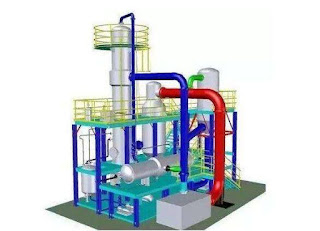The high-purity copper
sputtering target is one of the largest metal target products in the
electronics industry. The microstructure of the copper sputtering target has an
important effect on the quality of the sputtered thin film.
Sputtering is one of the main technologies
for preparing thin-film materials. It uses ions generated by an ion source to
accelerate the concentration in a vacuum to form a high-speed energy ion beam,
which bombards the solid surface and exchanges kinetic energy between ions and
solid surface atoms. The bombarded solid material is the raw material for
depositing thin films by sputtering, which is called sputtering target. The
thin films deposited by target sputtering have the characteristics of high
density and good adhesion. With the rapid development of new devices and
materials in the microelectronics industry, as well as applications in the
high-tech and industrial fields such as electronics, magnetics, optics, and
superconducting thin films, the size of the sputtering target market has been
expanding. Currently, the world's targets are mainly produced by the United
States, Germany, and Japan.
As a substrate for back-sputtering, in
order to obtain a uniform film deposition rate, the requirements for sputtering
copper targets mainly include uniform composition and microstructure, and fine
grain size. High-purity metal is an important raw material for the preparation
of targets. The purity of the metal is the key to the preparation of qualified
targets and the function of target sputtering films. The higher the purity of
the metal is, the better the uniformity of the film after sputtering is.
Usually, the purity of the metal used to prepare the target must be 4N and
above.
At present, the methods for preparing
target materials mainly include casting method and powder metallurgy method.
The casting method uses the methods of vacuum induction melting, vacuum
electric melting, and vacuum electron bombarding to perform ingot smelting and
casting, and finally machining the target material. The casting method can
produce targets with low impurity content, high density, and large size, but it
is not suitable for producing two or more metals with large differences in
melting point and density. The alloy target produced by the ordinary melting
method has a large composition. The powder metallurgy method uses cold pressing,
vacuum hot pressing and hot isostatic pressing to smelt a certain proportion of
the alloy powder raw material, cast it into an ingot, and pulverize it. After
high temperature sintering, the target material is finally formed. The powder
metallurgy method restrains the alloy target with uniform composition. However,
targets made in this way usually have the disadvantages of low density and high
impurity content.
For more information, please visit https://www.sputtertargets.net/.




